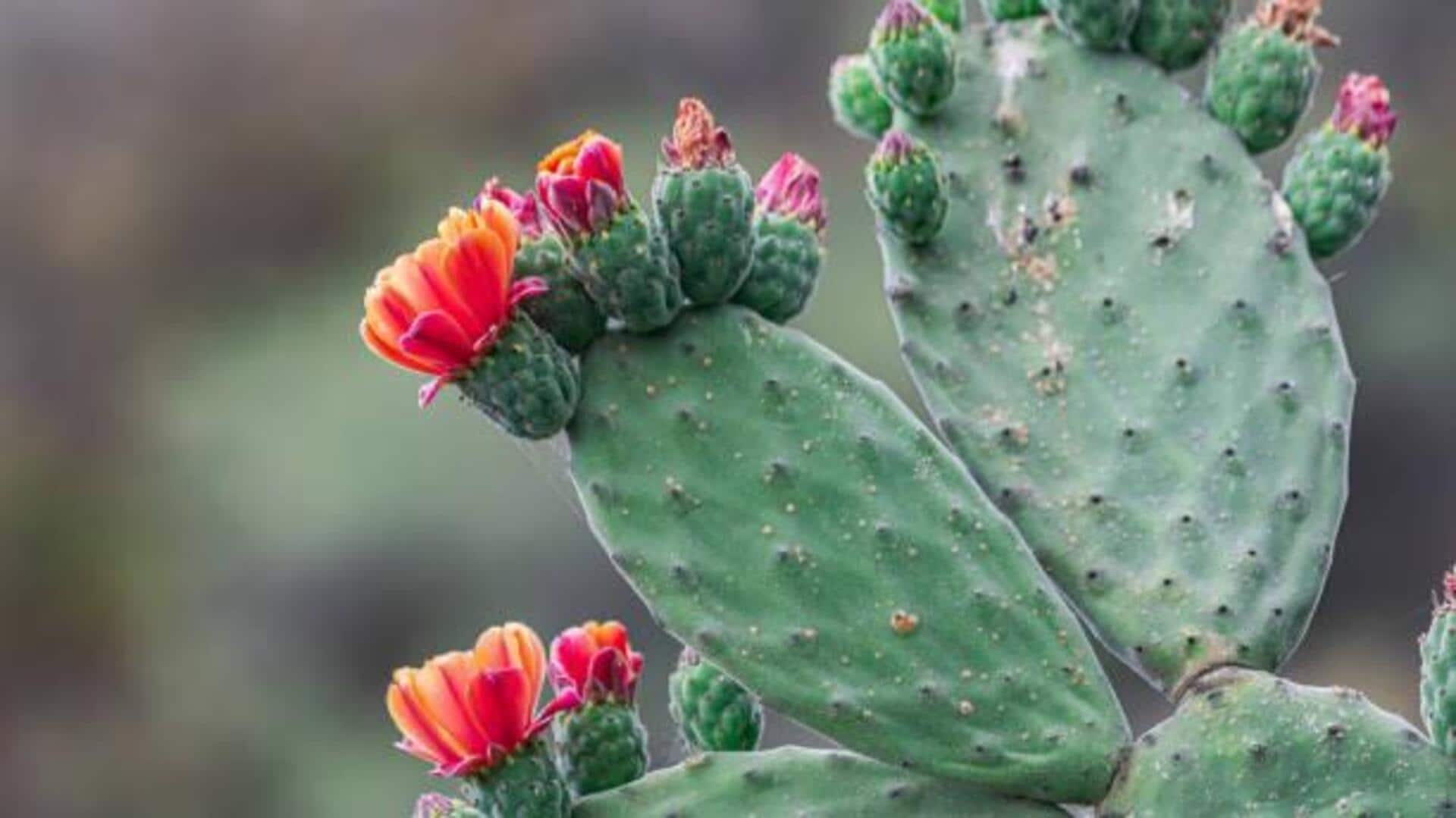
Prickly pear oil: A skincare game-changer
What's the story
Derived from the seeds of the prickly pear cactus, prickly pear oil is becoming a go-to skincare ingredient. With its high concentration of essential fatty acids and antioxidants, this oil comes with plenty of benefits to keep your skin healthy. Native to Africa, it has been used in traditional ways for its moisturizing and healing properties. With people going natural, prickly pear oil makes a great choice.
Nutrient powerhouse
Rich in essential fatty acids
Prickly pear oil is packed with essential fatty acids such as linoleic acid and oleic acid. These elements play an important role in keeping the skin barrier intact and preventing moisture loss. Linoleic acid helps in balancing sebum production, which makes it an ideal choice for dry as well as oily skin types. These fatty acids keep the skin hydrated and supple.
Protective shield
High antioxidant content
The oil is rich in vitamin E, which works as a potent antioxidant. Antioxidants shield the skin from free radicals and environmental stressors, including pollution and UV rays. This, in turn, minimizes signs of aging such as fine lines and wrinkles, while giving way to a more youthful look.
Skin-friendly formula
Non-comedogenic properties
One of the best features of prickly pear oil is that it is non-comedogenic, meaning it doesn't clog pores. This makes it an excellent option for acne-prone or sensitive skin types who want to avoid breakouts, but still want to reap the benefits of deep hydration.
Multi-use solution
Versatile application methods
Prickly pear oil can be used in a number of ways in your skincare routine. You can apply it directly on your face as a moisturizer, or blend it with other products such as serums or creams to amplify their efficacy. You can even use it on hair for added shine, or on nails for their strengthening.
Eco-friendly choice
Sustainable sourcing practices
The production of prickly pear oil also frequently embraces sustainable practices that support local communities in Africa, where these cacti grow in abundance. By opting for products made with this ingredient, consumers contribute to eco-conscious efforts that promote biodiversity conservation, along with providing economic opportunities for farmers.